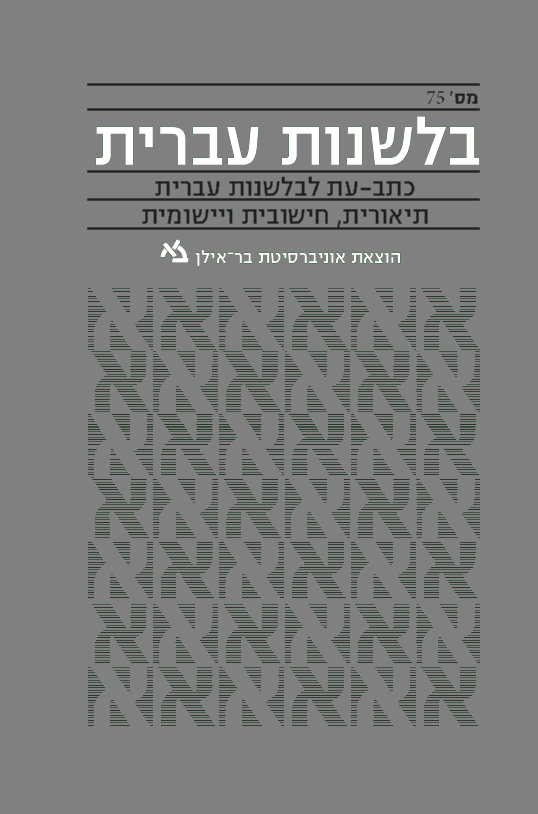Constraints of Evidentiality Shaping the Verb Introducing Constructed Dialogue in Spoken Hebrew Discourse
Keywords:
Quotative verbs, constructed dialogue, evidentiality, grammar in interaction, spoken Hebrew discourseAbstract
The study focuses on verbs introducing constructed dialogue (Tannen 1989) (‘direct speech’) (excluding the verb 'amar [‘say’]) in a corpus of over 11 hours of everyday Hebrew conversation (Maschler et al. 2017). Taking an Interactional Linguistics approach (Selting and Couper-Kuhlen 2001), and following the assumption that different forms must also be different in function, the study investigates the functional difference resulting in employing these various verbs. Analysis shows that the choices speakers make in selecting one group of verbs over another are not random but rather strongly shaped by the way the storyworld interaction had come to the speaker’s knowledge, that is, by evidentiality – a category which is not morphologically encoded in Hebrew and thus believed to have little impact in the language. Thus, when introducing hearsay interactions, a tendency to employ “vivid” verbs – verbs presenting an acoustic or visual image of the interaction (mainly verbs denoting the manner of the act of speaking) – was found. A tendency to employ “vivid” verbs (mainly verbs presenting the agent doing the speaking) was found also when introducing eyewitness interactions. On the other hand, “laconic” verbs, those lacking a visual or acoustic image of the interaction, were largely employed to introduce hypothetical interactions or interactions in which the speaker participated as one of the interlocutors in the storyworld. The study thus finds that the closer the presented interaction is to the speaker’s inner world (e.g., a hypothetical interaction or an interaction in which the speaker had acted as one of the storyworld interlocutors), the higher the tendency to employ verbs which manifest basic semantics (i.e., presenting limited information concerning the interaction and the act of speaking). On the other hand, when presenting hearsay or eyewitness interactions, verbs characterized by unique semantics which ‘revive’ the storyworld interaction tend to be employed. There is iconicity, then, between semantics on the one hand, and the way the speaker experiences the storyworld interaction, on the other.

